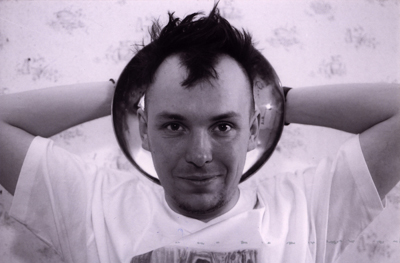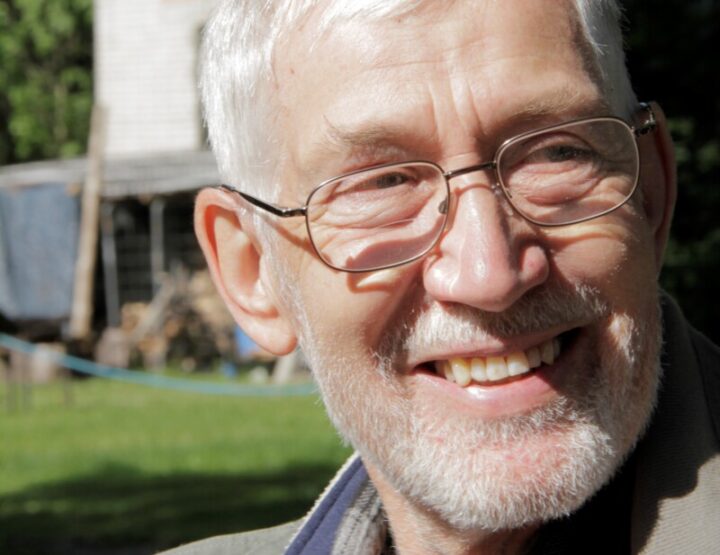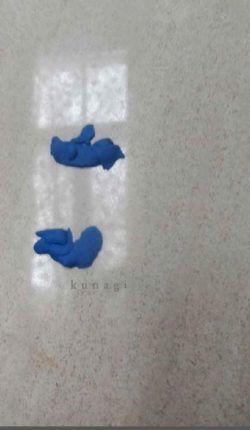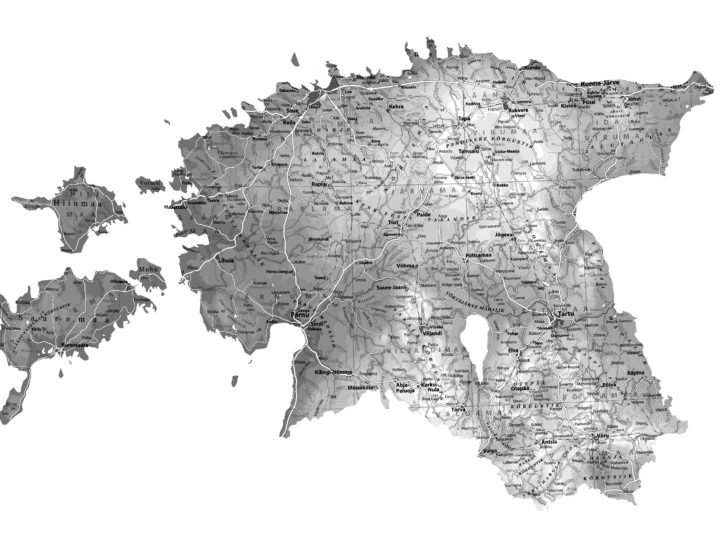I will mostly talk about what has stayed with me. What has become familiar. Manipulating phonograms recorded on wax rolls, tapes, discs and heaven knows what else, is certainly nothing new. Much has probably been written about it too. According to William Burroughs, the technique of scrambling recorded speech units dates back to 1881.
At that time it was used in counterespionage. He also talks about sound as a weapon and virus, an agent of magic. This is most probable. Sound recordings with audio-coding, where the music conceals an incomprehensible message that seeps into the listener’s subconscious and starts messing about in there, are used in medical treatment. Hopefully musicians and singers feel at least a modicum of responsibility and do not hide damaging messages in their pieces or include sounds at a frequency which is damaging to the human brain (causing anxiety, fear, obsessions etc.).
The present essay focuses on mystical self-reflection, creative usage of an object and its ecstatic possibilities, carried out with a Dictaphone. The first purposeful predecessor of my action that I know of is Samuel Beckett’s play Krapp’s Last Tape (1958). An old rake, who has recorded his speech, listens to tapes from different years and creates a kind of community of people from his own personality, whose opinions start to communicate with one another. The tape-recorder is not a petty bourgeois luxury item, but a tough witness of truth. The first steps down this path occur at the moment when the fear of a microphone (inherited from aboriginals) and artistic vanity disappear, when man learns to talk fluently and honestly with/to himself. It doesn’t matter how great an orator somebody is. Soon enough, the monologue begins to differ from whatever dialogue we conduct with others. There is no need to divide or oppose the world, but close inspection leads to a natural conclusion: I am not the other. However much we try to imitate someone else, it proves impossible. It is not a matter of self-centredness, but of seeing natural discrepancies. For Krapp, the recordings offer a chance to perceive himself at each stage of life, to enliven and speed up his auto-communication: “These old P.M.s are gruesome, but I often find them – (Krapp switches off, broods, switches on) – a help before embarking on a new . . . (hesitates) . . . retrospect.”
Thanks to the machine, the inner monologue can be played again, and man can test his opinions and observe his expressions from a distance. Hearing our own voices has a weird impact on us. Burroughs even claims that when we get hold of someone’s voice recording, we can influence him by the playback versions and exercise a scrambling magic on him. This hides a wider contact-magical belief and the conviction that similar produces similar. A joyous voice evokes a good mood, a cry expresses pain, sounds of sex cause excitement etc. He talks separately about scrambling the content of the message. Unexpected fluctuations indeed emerge. At a recording session, most people hesitate, dreading the preservation of their stupid and unorganised speech, cringing at the sound of their own voice or at something else. It could easily be superstition about giving away a piece of oneself. Or the discord between our inner self-view and the recording that we hear later. Ordinary speakers find it very difficult to get used to recording. My aim was to examine myself also through other voices, or collages that were compiled from them. To listen to the nuances of reactions. Scrambling them, I can relate to them anew.
Two fascinating fields that Burroughs hints at are, first, live imitation of scrambled voices and, second, (especially) the impact of listening to words spoken in sleep. In the latter case I guess the surprise could be considerable. The problem, of course, is how to record these things. You probably need assistants or have to practice memorising the content and tone of what you heard in sleep… the voice-activating system of ordinary Dictaphones activates at whatever sound, and the end and beginning of an audio signal are vague. Krapp, too, has obviously practised a lot: he even has a special listening posture. He listens emotionally, is taken by surprise, laughs, and rewinds the tape. At the most moving moments, when his 10-year-younger self prattles on about the meaning of life and the instant of great clarity, he fast forwards. He does not need the old self-deception. He has had the courage to tear down the scaffolding of opinions. The old man acknowledges that he knows nothing, that there is no place in his life for the miracle his long-lost lover once ignited. And yet he wants nothing back, because he has found another conversation partner, someone who understands him better – himself. If a human being for some reason remains alone, he could stay in this condition in more open-minded way.
Self-listening can be a religious, cleansing ritual. I think that when Krapp wanders on his solitary path, contemplates red berries and the tumbling snow, he is attentive and his thoughts move deeply. There is much to tell the tape and these messages to himself support him to his dying day. And as he has also sold some tapes, there are other pairs of ears straining to catch his ramblings and have their own ideas. There is a tiny sense in his behaviour that what he listens to is in fact changing him a bit. In his Beckett-like manner, Krapp does what the world of Castaneda calls summarising – producing a balance sheet in order to cope with his life, recalling everything in the greatest detail. On the technical side, he is not yet scrambling, erasing, changing the speed or occasionally over-recording. Scrambling, however, becomes more necessary when man starts to communicate with the world by changing a recording. I think my first inspiration for this was Jaan Rannap’s children’s book School Stories, where by clumsily cutting out a cough from a tape some boys achieved a totally absurd result, and the interview had to be repeated. Life amidst weird sounds, however, evokes no need for corrections. I remember the first means of ecstasy, the old gramophone at home. I listened to the records at the wrong speed, mostly faster, and got really excited about that. At the moment when I discovered that it is possible to produce sentences by simply lifting and replacing the needle on a vinyl record, or by making it repeat phrases, I was totally captivated. In the early 80s I also invented the trick of ‘discratching’ (spinning the record forwards and backwards), and often tried to scratch the syllables inside a word at a different speed. I thus fairly soon acquired the notion of the relativity of language and reality. The first tape recorder required a lot of practise and at first I recorded normally. Soon enough, however, I inserted episodes, fragments of songs, scraping and creaking noises, a few poems, the sound of the running tape etc. At more melancholy times the playfulness vanished, replaced by songs and confessional extracts. It is only natural that hearing the voices of lost/dead people has an entirely different effect than hearing the voices of people who live nearby (in one’s heart). At some point I began collecting extracts of the voices of people I knew. I planned to record about 30, but I carried on. I think I have by now recorded over one hundred people, plus episodic voices in various places. Quite a bit of what was said in the enthusiasm of youth now sounds very different when we consider the speakers’ subsequent fates. When I managed to borrow a Dictaphone from the university for an interview, I took up reading poetry with that gadget.
At my earlier performances I read the text into the Dictaphone beforehand, and then filled the pauses while replaying it with repetitions of lines or stressed words. For a song I sometimes recorded a guitar background, or a flute, playing interludes over the earlier recording. Later I cultivated live elements, on-the-spot recording and re-performing samples while a poem progressed. Then came reading in two voices, where the speed of the Dictaphone voice was slowed and read along with my normal voice. I realised that the possibilities were endless. You can take the Dictaphone along everywhere and record whatever idea or sound you fancy. Its sounds (rewinding with sound, pressing the buttons etc) can be used in computer music. Many of my ideas, which later acquired written form, were initially muttered on tape during my wanderings. On the other hand you can record all sorts of nice sounds – a child singing on a bus, a van suddenly accelerating, the creaking of stairs. This activity increases your sample sensitivity, meaning you can predict when a really fascinating sound is going to emerge. However, you cannot possibly record all the sounds and voices because the sounds of the world mostly flow freely, uncaptured. After all, history that has not been recorded in sound (if we do not accept the mystic recording of sounds in light, stone, the fourth dimension etc) is thousands of times longer than the fragment of time when we have had the phonograph at hand.
II
Perhaps a few words about Dictaphone shamanism. This interpretation differs from others only in its means and technical specifics. In today’s context, working with a Dictaphone (outside journalism, folklore collecting and other types of official recording, mostly done with more elaborate gadgets) is an anachronistic blast of technical nostalgia, caused by the availability and user-friendliness of the device. As in true shamanism, here too the instrument acquires a power of its own, its usage becomes highly personal, rituals emerge that adjust to places where they happen to occur. The shaman captures a slice of life on tape – the voice in its thousands of possibilities. Creating sounds (vibrations) is, after all, one of the main features of existence. Sound waves mark voyages on land, in the air and underwater. The sound probably stays with us even when spatial dimensions change, although the hearing might alter. With advances in the sound technology industry, each musician should be able to reach an auricular sense that follows his personal logic. The strength and tone of voice determine others’ and our own (listening to the inner voice, and sounds of body chemistry) stamina, condition, essence etc. A shaman who captures a fragment of life later opens it up to change and transformation. An audible dialogue with himself and his surroundings begins. All environments and spaces naturally also react in one way or another. Besides people, I have played my samples to crows and ravens, a bit to chicken, cats and dogs. Each listening creature has reacted differently. There has been fear, anxiety, and attention. My totem animal is a man-bird who has emerged from the depths of consciousness. I therefore have alert relations with birds. The most active seem to be crows and ravens, who always squawk back and keep an eye on me wherever I go. To some extent, I have learned to squawk myself. Once in spring when I returned from a walk, a tiny titmouse sat on my shoulder. I sang to it and during a pause it chirped. The little bird sat on my shoulder for at least five minutes until an approaching family frightened it off.
The pyrotechnics of bestowing meanings and the big neuro-technical show actually went on long before the Dictaphone, and has continued ever since life began, inside us. Human senses are in fact the most powerful scrambling devices of all. As powerful as life. Imagine how they mix, scramble, adapt sounds, pictures, smells, touches, ideas etc. Life itself sometimes seems like an everlasting audio-visual-mental-aural party, although we all occasionally visit areas of peace and tranquillity in order to chill out. Existence is a blend of permanent and changing rhythms, a human attempt to conform to the world. And why can’t the world be an endless number of discs in God’s bag of records, which He keeps on a small nebula beside the gramophone of the universe.
III
The basic element of Dictaphone shamanism is repetition. Samples considerably weaken the orientation of everyday reality, and create a state of anxiety, reflection, wakeful dreaming or even a mild trance. From there, the traveller must proceed alone. A Dictaphone can imitate the surrounding environment (chirping, birdsong, rustle of trees, creaking etc.), ridicule and parody it, cause fear, uncertainty and various other sensations. The utmost of them for me is the mild and holy trance, evoked by slow, dull, recurrent phrases, which can often be the result of revelation, or they are found or invented, growing out of the situation, mood and ideas related to the ritual. Dictaphone shamanism is man’s right to choose the speed, timbre and duration of the surrounding environment of sound. Auditory sensation leads to the perception of time. Time produced by means of repetition is no longer linear, but sometimes circular or octagonal, sometimes a black vacuum or a slowly constructed friendly labyrinth. We can choose at which favourite tenth part of our favourite second we wish to stop, how long we linger there and where to move on to. The rather pictorial image of unexpected sounds creates new possibilities of visualisation in your mind with your eyes closed. Conversions of space, new thought chains and other alterations of the conscious are at hand. You can also try two Dictaphones at the same time. Let them play different samples at different speeds. Castaneda’s books also record this perception-changing technique. At one point Don Juan and Don Genaro whisper a different story into Carlos’ ear, which he tries to follow but fails, soon losing his grip on his inner dialogue and normal reality. A situation like this might produce no more than confusion, but by skilfully using available means, man might experience something much more. It is of course very similar to Zen exercises. On the whole, sound experiments in contemporary music are employed so extensively that one could write a thousand pages about them or more. Repetition principle parallels Dictaphone shamanism with, for example, mantra reading and its equivalents in many religious traditions. Variations, on the other hand, are suitable for new dance music (loops, samples, mixing, slow-down, speed up, reversing), rewinding with sound, stretching etc.), especially its more experimental side, which basically functions like performance. The difference from the latter might lie in the fact that my performative behaviour has a religious and ritualistic orientation, and it hardly ever has any artistic pretensions. In my case a performance, otherwise associated with aggressiveness, has a confessional nature and an orientation to a more diverse and compact discovery of the world. Such rituals (e.g. ‘watering with song’, where a Dictaphone playing powerful music – Tuva, Tibetan, Siberian incantations, etc. – enforces the entire body of energy, by placing the amplifiers against the centres of power) are initially directed at oneself, and whatever is achieved through them can be used in music, writing, in fact in everything suitable. Some aims of course are meant to remain a secret.
So what happens during scrambling? Phrases that seem senseless and weird, when first heard, gradually acquire a meaning and lead perception to peculiar fields. The speed and shape of the recurrent fragment also dictate my movements, so that dance improvisation is often a natural bonus.
Similar rituals can be arranged in very different places and with different approaches. He who is really involved in recording and scrambling must determine what and when he can or cannot record. And where he may or may not present it. Taboo voices do exist, and the reasons they are taboo vary, from being too personal to being too dangerous or exhausting etc. Personal associations naturally amplify everything, and the consenting surroundings matter a lot. The aim should be harmony, although a Dictaphone can also sometimes be used in the service of the brush-off. As in hearing psychology, some samples tend to change shape in repetition. Although technically the same association of sounds recurs, the denser and sparser parts create an impression of change, and this leads on to the unknown. It could also happen that a brief shriek, rustle, purring or some other sound in the background is in fact more significant than what is clearly heard. Samples that have been twisted around several times are more transporting; when speech is slowed down or reversed, the listener might think he is hearing words in an unknown language. It is not too difficult to imagine the environment where a sample comes from – sometimes even if we are not familiar with it. Since sounds are always tied to the existing world, listening to various versions of one’s own voice certainly affords plenty of opportunities to contemplate one’s inner world. The favourite samples of every Dictaphone person correspond with his nature. The alterations occurring in repetition are different as well; some like rapid, exalted clatter, while another prefers delicate soft sounds, a third wants weird chance conglomerations, a fourth recurrent interjections etc. For example, one of the Dictaphone pioneers in Tartu, Martini, liked to record at some point under bridges, which afforded his sound collages a cool natural echo. I have experimented with a Dictaphone also in music. At first scrambling on my own, then together with the band NE!, trumpets, acoustic guitar and song. The resulting dialogue is quite singular, especially if you seize excerpts from an improvising co-player and alter them. My first public Dictaphone concert (using the Dictaphone as a rhythm instrument that commented on the phonogram) was in spring 2004 at the festival Brave New Sound. Indeed, possibilities are endless. One should have familiar things close by. What the elements of my life mean to others should not be, and indeed are not, my concern.
All of this forms a freedom of sound which I have been involved in from childhood to this day. According to a song by Nautilus Pompilus, this music will be eternal once I have changed the batteries.
(Revised version, first published in Vikerkaar 2002/1)
Lauri Sommer
by Aare Pilv
Lauri Sommer (b 1973) is a poet and musician who made his debut in poetry in the mid- 1990s in the literary group Erakkond. Today, he is one of the most fascinating and original poets of his generation. He has published three collections of poetry: Laurila (1998), Raagraamis poiss (A Boy in Twigframe, 2001, poetry of 1990-92) and Nõidade õrnus (Tenderness of Enchanters, 2004). In his last book, Sommer’s expressive and visionary free verse has achieved special forcefulness, describing the ability for perception and love that reach way beyond our ordinary world. Religious and ‘bewitching’ tones have always been present in Sommer’s work, but they have now become a deeply perceived conscious field of movement that is quite unique in contemporary Estonian poetry. Sommer has also been involved in music, from punk bands to old music, from ambient computer music to simple piano compositions; in 2004 he issued the record Piimaš. Sommer has an MA in literature; his work on the backgrounds of the work of Uku Masing, Estonian theologian, visionary and poet appeared in the literary magazine ‘Looming’ in 2004. His research on Masing is a significant contribution in explaining and interpreting the phenomenon of this particular Estonian genius. Masing’s beliefs and interests have influenced Sommer’s understanding of the world as well, although he has remained an independent creative person with an original world of images and intensity. The essay about Dictaphone shamanism also reveals Sommer’s peculiar and many-sided vision of life that is always magical and tense, like in a dream.
© ELM no 20, spring 2005





